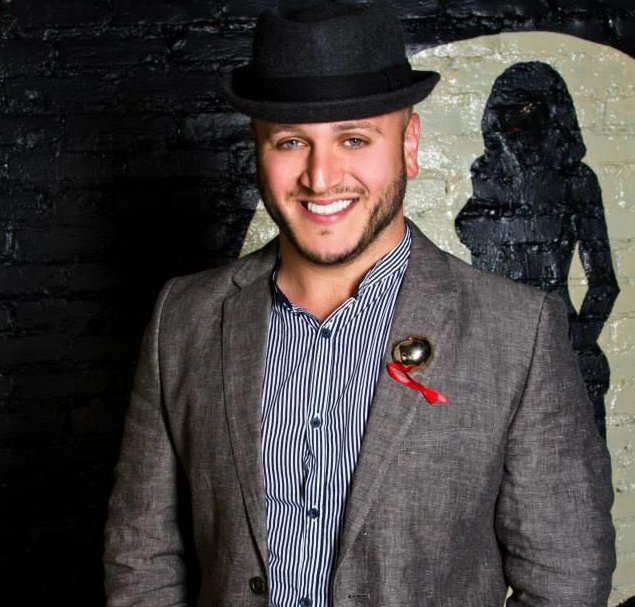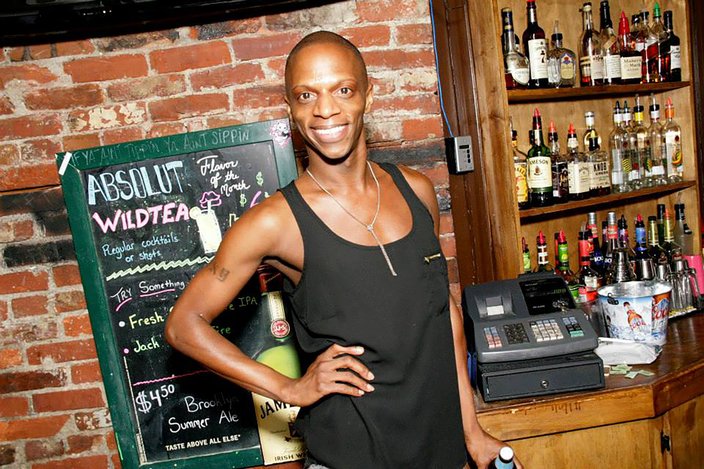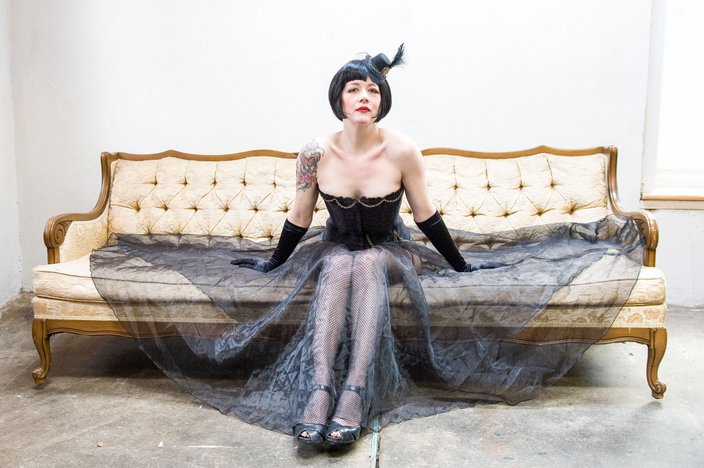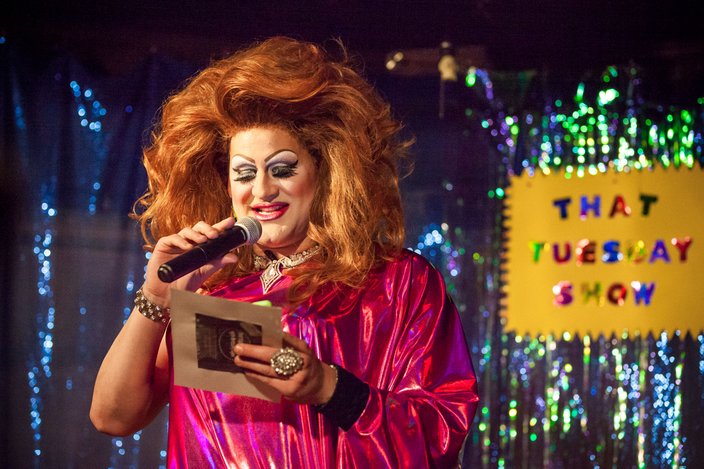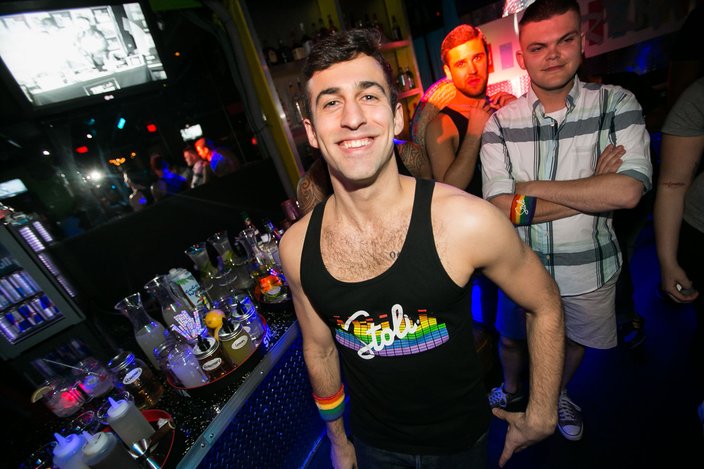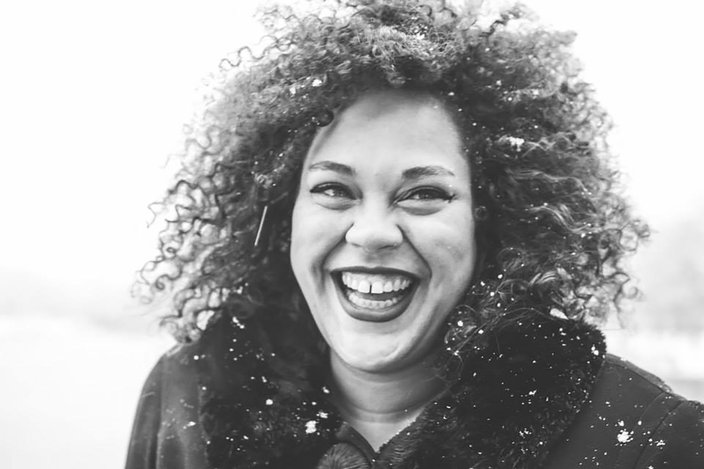
June 02, 2015
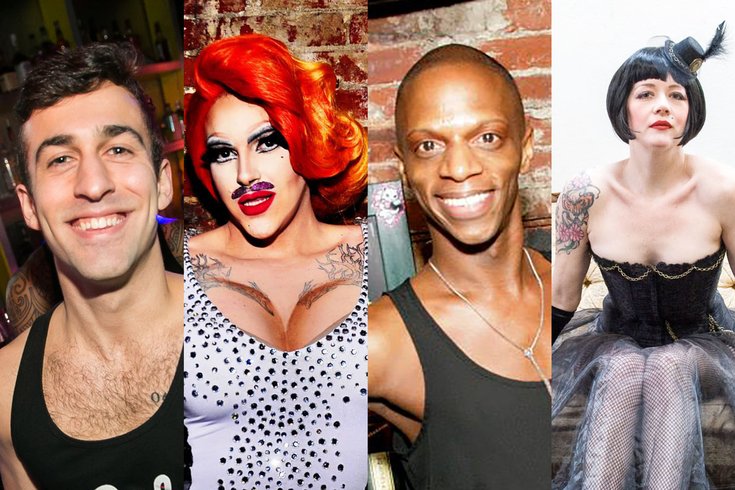 File Art /for PhillyVoice
File Art /for PhillyVoice
These are the people who create the momentum for the self-described freaks and gender illusionists to step onto the stage or to spin the next record as most of us are drifting off to sleep.
There are probably more people out and about at 13th and Locust streets at midnight than at noon. The block feels like a parade route when the temperature rises. Customers grab tables at Knock just to catch a glimpse of the eclectic entourages that glide past on their way to leather night, a dance party or the latest burlesque battle.
There are men everywhere – packs of them in tank tops and jerseys and button-downs – hustling into corner bars where requisite thud-thud-thuds drift into the night air from glowing jukeboxes. Rainbow street signs seem to gently beckon the night people out of their caves and lead them into a fantasy world of their choosing. The drag queens, the club kids and voyeurs who decorate the macadam when the sun goes down offer a flip side to the sun-drenched sidewalks where the mommies drop kids off at day care and the office workers hustle to lunch. About the only consistent population is the prostitutes, slender young men with bad skin who make plays for drinks and drugs 24 hours a day. There are also the guys who slink to and from the bathhouses tucked on back streets where anything goes.
And then there are the party people. They’re the ones who show up religiously for shows and to dance, to crowd into outdoor tables at Woody’s, catcall friends across the street and strip down to next to nothing at The Bike Stop. These are the people who create the momentum for the self-described freaks and gender illusionists to step onto the stage or to spin the next record as most of us are drifting off to sleep.
The newest ringleader of the circus is easy to spot in the crowd at Tabu. Decked out in his usual baseball cap and tank top, Josh Schonewolf is getting ready for his next event. The 34-year-old is the most talked about club promoter in the Gayborhood right now, having cut his teeth on the popular food vlog “Josh Can’t Cook.” In between bartending gigs a few years ago he started cranking out weekly events at Tavern on Camac with catchy names like "Hot Mesh" that caught on among younger men, a kind of sweet spot of a customer everyone wants to woo inside their bars and clubs.
“I think the days of the circuit party are over,” Schonewolf says. “Philly is a huge hotbed for really, really good drag right now.”
He says the cabaret scene is also coming back to life, as well as “bearlesque” (think big, beefy guys in glitter) and variety shows, including "Bev’s Bitchfest," which he now produces.
As the audience fuels up on vodka drinks for the show upstairs at Tabu where many of Schonewolf’s acts regularly perform, he surveys the scene. He knows everyone. There are hugs, kisses and more hugs. It’s part of a job that could easily be gone tomorrow, and he knows it. While most of his events have been wildly successful – no small coup for a guy who used to work at a bank – he hit a low point last year when he tried to develop a black variety show. And while anyone who knows Schonewolf also knows his intentions are good, he received a lot of flak, apologized profusely and moved onto the next big thing.
He gives Philly a lot of credit for being its own unique kind of party monster.
“I think we’re weirder and funnier in Philly, and we love it,” he says. “Anytime I’ve ever been booked in other cities, the audience is usually shellshocked.”
Take for example Bev, a cantankerous drag queen with slightly crooked eyewear who isn’t above making racy comments loaded to the gills with pop culture and sexual innuendos. The character, played by Drew Gaver, a 33-year-old who lives in Center City, has been making the rounds at Tabu, Voyeur the Venture Inn and The Victoria Freehouse to great reviews. It’s hard not to love Bev, who tends to say what everyone’s thinking in the grand tradition of Joan Rivers and Bea Arthur. Bev’s like your crazy old aunt who’s had a few too many whiskey sours after the church picnic.
“I started performing in Philly as Bev about two years ago,” says Gaver. A dead ringer for a young John Cameron Mitchell, Gaver’s transformation into a middle-aged woman with a lot to say is inspired by a combination of community theater and cabaret with a dash of "RuPaul’s Drag Race," a TV show that can be credited with making drag in again. In fact, Gaver performed as Bev last year with drag legends Jackie Beat, Bianca Del Rio and Sherry Vine at Voyeur, proving it’s a small drag world after all where everyone seems to know everyone else and everyone has something to stay about it on Facebook and Instagram.
Well-rehearsed and professionally produced shows have become the norm, driven, in part, by more sophisticated audiences who travel widely and expect more for the price of cover than simply lip-syncing to Liza Minnelli.
“I think people that go out with the intention of seeing a show want to be entertained,” he says. But as shows like "Bev’s Bitchfest" cross over between straight and gay audiences, it makes longtime Gayborhood denizens wonder what may be next for the nightlife scene. And as more people use apps to hook up and websites for entertainment, are we watching the last of a dying breed?
“I don’t think that gay bars will ever be nonexistent,” says Gaver. “Gay people like to support gay business.”
The gay community is also pretty resilient when it comes to bouncing back. When the dance scene died down, save for maybe Voyeur and Woody’s, it left many club promoters scrambling for new ideas. It didn’t take long before live shows were re-introduced in a more polished way. These aren’t the drag shows imitating beloved divas like Judy Garland anymore. The new generation has cultivated new characters with queer sensibilities. Unless you visit Sandy Beach at Venture Inn for his "La Cage aux Beach," it’s rare to hear a drag queen sing a show tune anymore.
Ryan Henaghan is a good example of where things have been headed. He’s a newbie on the scene who creatively twists ideas of what’s masculine and feminine as Mistor Fahrenheit. The 27-year-old has been performing with Schonewolf since the Weird Beard Revue first debuted at L’Etage last year. These days he’s working with a gender-bending comedy troupe called Haus of Ham alongside Eric Jaffe, Lili St. Queer and Pissi Myles. With a mustache and lots of glittery panache, you can never be sure what he’ll serve on stage. A lot of this stuff seems like it could have been imported from Berlin in the '20s.
“I do drag a lot of days of the week and end up in a lot of different places,” says Henaghan, who’s become one of the city’s most popular “boylesque” stars (think glitter and fishnets on men). “I think a lot of people have been exposed to what drag is recently and it’s opened up a lot of doors for not only people to come out and embrace the LGBT community, but to be a part of it.”
Men aren’t the only ones dominating the Gayborhood scene, however. Lascivious Jane has been performing for longer than most. The 40-year-old is the artistic director of Liberty City Kings Drag and Burlesque. And while most of her popular shows find homes in the Gayborhood, Jane has been spreading her wings a bit (leather and all) with the Philadelphia Burlesque Battle Royale and the Diabolique Fetish Ball, events that are neither exclusively gay nor straight, but tend to cater more toward the fetish community, an undercurrent that has always had a place among the gay community.
“The queer performance scene has grown dramatically,” she says. “When I first started performing there were only a couple of shows a month, and now there are often a couple of shows a night.”
Her own style – a mix of drag and burlesque that plays upon gender stereotypes with humor and sex appeal – seems to have evolved right along with the scene, which now boasts a fair share of male performers in beards and tassels, as well as women who perform as drag kings.
For many of the performers in recent years, bending gender and embracing a decidedly queer persona has become a rite of passage. When Lascivious Jane turned 40, she was performing on stage in front of friends and her parents in a barely-there costume.
“People in the audience raised their phones up so I could see that it was midnight,” she says, “and I was entering a new decade doing what I love in front of people that love me.”
Well-rehearsed and professionally produced shows have become the norm, driven, in part, by more sophisticated audiences who travel widely and expect more for the price of cover than simply lip-syncing to Liza Minnelli. It used to be that someone could throw on some fake eyelashes and a cheap costume in a dive bar with lousy lighting and call it a show, but the stakes have been upped dramatically in recent years. You have photographers like Jonathan Hernandez painstakingly documenting the nooks and crannies of LGBT nightlife, upping the game and making even the newest club kids into Philly superstars. With social media, the momentum has gotten very real on Facebook and Instagram, where established drag queens like Satine Harlow and Brittany Lynn have dedicated followers who aren’t afraid to throw a little shade from time to time.
And the blurring between gay and straight audiences has also been notable, but not always to everyone’s pleasure.
Bachelorette parties have become a mainstay in Gayborhood clubs in recent years, causing some regulars to raise their eyebrows. In theory, the acceptance is appreciated, just as long as these roving party girls in penis hats aren’t looking for an excuse to behave badly or to treat the LGBT community like something out of National Geographic.
On the flip side, more gays and lesbians are settling into straight bars and clubs from South Philly to Fishtown. As people migrate because of high rents, trends and new frontiers, neighborhoods like East Passyunk Avenue have become gay meccas, leaving many Gayborhood proprietors wondering how they can woo back the ex-pats.
“I think that as the LGBT community becomes more accepted, it’s killing the idea of a gay bar,” says Billy Cavallo. Known as the “Stoli Guy” after winning a talent and modeling competition sponsored by Stoli Vodka, Cavallo is a popular bartender on the scene, slinging drinks at Venture Inn and Boxers PHL. He says that as more straight bars welcome gay and lesbian clientele, gays bars face stiff competition. That could explain why bars like Boxers and clubs like iCandy are looking for new ways to appeal to customers – like having their best-looking barbacks strip down to their skivvies. iCandy even tried installing a shower a few years ago where customers could watch as go-go boys soaped up.
“I don’t foresee the death of the gay bar,” says Cavallo, who has been making a very steady living despite what the naysayers think. “That’s where our culture and history is.” He does expect nightlife to continue evolving as it always has. It used to be that men and women never even visited the same bars. But today, with a noticeable absence of any exclusively lesbian establishments, the gay community in Philly has been mixing more than vodka and tonics.
Ashley Coleman, a former bartender at Sisters, has been working at Tabu, Tavern on Camac and Voyeur ever since the lesbian nightclub closed its doors a few years ago. For Coleman, a 30-year-old who lives in South Philly, working in the Gayborhood is like having a second family. Even her nana came to visit when she was behind the bar one night.
“I was so proud to show her my life,” she says. “And the bears just loved her. She didn’t want to leave!”
But as someone who has watched the transition of lesbian nightlife radically change in Philly, Coleman admits that women have been migrating and looking for a place to fit in. It’s about something more than drinking, dancing and socializing, she says. “We are a place where we can birth movements, where we can make change happen. And where we can be family,” she says.
It was in a gay bar in New York City in 1969 that the modern gay rights movement was born after all. The Stonewall Riot, when gay patrons fought back against relentless police harassment, lit the fire of a burgeoning movement that would change, well, everything. The question now, of course, is what the so-called Millennials will do with the torch, how they will remake LGBT nightlife for the modern world – and it will last.
“The millennial gays want new events, new décor, new everything,” says Coleman. It can take some getting used to, admits this 12-year nightlife veteran who still finds that she’s more of a traditionalist than she once thought. And while, sure, the late night shifts sometimes get to her, especially at Voyeur when the doors only close at sun up, she still considers working in the Gayborhood a labor of love.
For Schonewolf, it’s about pushing the envelope and rewarding real talent. “When Kemar Jewel won Mr. Everything, that meant a lot to me,” he says. The grueling event had performers sing, dance and seduce audiences for 10 long weeks until Jewel was handed a check for $1,000, beating out 15 other guys for the title.
With glitter dripping down his face, and wearing a silver cat suit, he told a packed house that Mr. Everything saved his life. At that point the audience rose to their feet and cheered for him for what seemed like an hour.
“Someone whispered in my ear, ‘This is huge, Josh,’” says Schonewolf. “It would have been enough for me.” Lucky for the Gayborhood, it was anything but.
